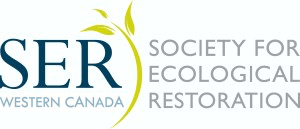
- This event has passed.
Common Garden Studies for Herbaceous Plants: Lessons Learned from the Longleaf Pine Ecosystem
The fifth in the Eastern Seed Zone Forum’s online lecture and discussion series aimed at providing both information about the creation of seed zones in general and a forum in which professionals, experts, and interested parties discuss the possibility of drafting seed zone guidelines for the eastern United States. In this webinar, Dr. Joan Walker, Research Ecologist at the USDA Forest Service Southern Research Station, will describe steps taken to develop the South Carolina Common Garden Study, including seed collection, plug production, garden establishment and design, selection of traits to measure, and data collection.
Where should the seeds for longleaf pine restoration come from? The question seems simple, but the answer is not. Many ground layer species of the longleaf pine ecosystem have broad geographic ranges, and local populations may be adapted to local climates and environments. They may be less reliable for planting in different conditions even within the geographic range. Although general seed zone models could be used to guide seed source selection, there is little information for assessing the applicability of general models to common forbs and grasses associated with longleaf pine. Common garden studies, in which individuals from different populations of the same species are grown together, are used to evaluate population differences. Phenological, growth and reproductive traits are measured and related to geographic, environmental, or genetic patterns.
In this webinar, Dr. Joan Walker, Research Ecologist at the USDA Forest Service Southern Research Station, will describe steps taken to develop the South Carolina Common Garden Study, including seed collection, plug production, garden establishment and design, selection of traits to measure, and data collection. She will share lessons learned, discuss the value of linking performance patterns to genetic structure, and present preliminary results of our multi-species study of common herbaceous perennials of the longleaf pine ecosystem.
Please join the USDA Forest Service Reforestation, Nurseries, and Genetics Resources team for its fifth discussion about what it will take to create seed zone guidelines to serve as tools for improved collaborations and partnership in the region.
